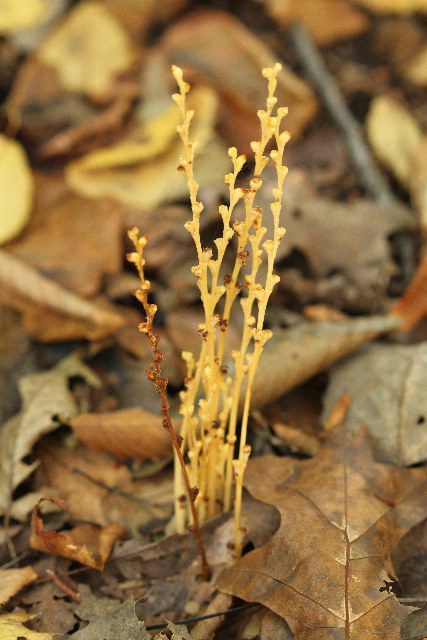 |
| Beech Drops (photo by Stan Malcolm, available at http://www.performance-vision.com/airline2011/airline-fall-11c.htm) |
Plant Profile.− This month’s plant
profile in a parasitic plant called Beech Drops (Epifagus virginiana). Beech Drops clump around beech trees, grow
about six inches high, and look dead. They look dead because they lack leaves
and chlorophyll, but luckily for Beech Drops, they do not need to make their own
food because they can get nutrients and carbohydrates from the roots of Beech
trees (Fagus grandifolia).
Beech Drops may not look impressive at first, but if you look closely you’ll find tiny pink flowers. The flowers near the base of the stem seem closed up tight. These flowers are known as cleistogamous and they are self-fertilizing. The flowers near the top of the plan are open. These flowers are chasmogamous and are fertilized by nearby plants. A recent study suggests that those chasmogamous flowers may actually be pollinated by ants!
While
Beech Drops are fascinating in their own right, they also have been used
medicinally for thousands of years. American Indians would steep the whole
plant in hot water to great a tea to treat diarrhea, dysentery, mouth sores and
a variety of other complaints. Some people have even used the plant as a poultice
to treat wounds and arrest the on-set of gangrene.
Beech
Drops are found across the eastern United States and Canada. They are also
found in all three provinces of North Carolina, from the mountains to the
coast.
No comments:
Post a Comment